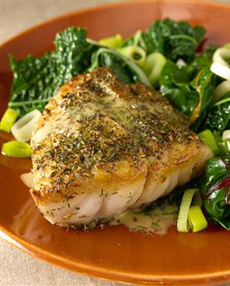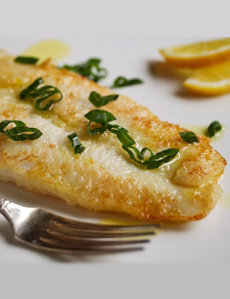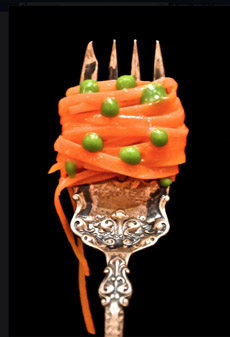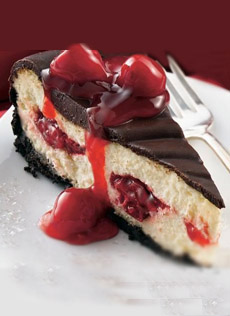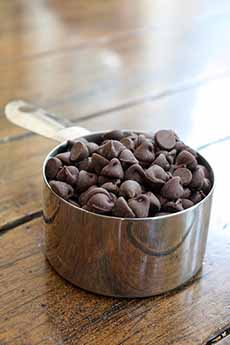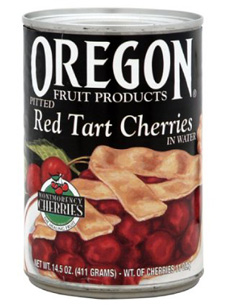|

[1] Banana bread with chocolate chips and nuts. We highly recommend the optional chocolate glaze in the recipe (not shown) (photo © Lulu Durand | iStock Photo).
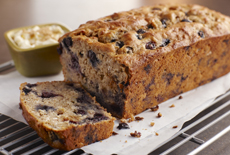
[2] Don’t want chocolate chips or nuts? How about blueberries? Here’s the recipe from Driscoll’s (photo © Driscoll’s).
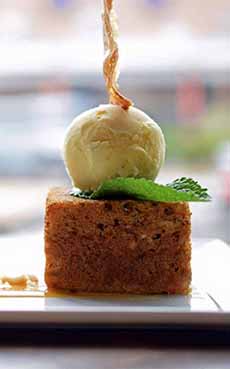
[3] Fancy banana bread: baked in a rectangular pan, topped with ice cream and a candy garnish (photo © Good Food Montford | Charlotte, North Carolina).

[4] Make banana bread with overripe bananas. These are just beginning to get ripe enough. The splotchier, the better (photo © Baking Library | Blogspot).
|
|
February 23rd is National Banana Bread Day.
You’d think we could get a decent piece of banana bread in this town, but it’s surprisingly tough. Most of what we purchase at specialty food stores has only a nodding acquaintance with bananas. With no banana punch but a high level of spices, it could be zucchini bread.
One does do better at bakeries; but alas, bakeries are fast becoming extinct here due to low margins and astounding rents. So since today is National Banana Bread Day, grab the bananas and a loaf pan and start baking.
HOW TO GET MORE BANANA FLAVOR
One reason that some recipes fall short on banana flavor is that the recipe requires overripe bananas. When they’re brown and splotchy and unappealing, that’s when you want to bake. The more brown/overripe, the sweeter the banana flavor.
A trick for always having the perfect ripeness on hand: Buy the bananas before you need them. (If you’re lucky, you’ll find overripe ones that have been marked down.)
Once they become overripe, peel them, wrap them tightly and freeze them. They thaw quickly at room temperature when you’re ready to bake.
We always bake a double batch and put the second one in the freezer; we slice it frozen and cut slices as needed for ourselves, work colleagues, friends and neighbors.
This recipe was adapted from one by Charles Masters for the Food Network. We also love this chocolate chip banana cake recipe from Chef Pichet Ong.
RECIPE: BANANA BREAD
Ingredients For the Bread
1 1/4 cups all-purpose flour
3/4 cup granulated sugar
1 teaspoon baking powder
1 teaspoon salt
1/2 teaspoon baking soda
1/2 teaspoon ground cinnamon
1/2 teaspoon grated nutmeg
1 cup semisweet chocolate chips
2 large eggs
1 stick unsalted butter, melted and cooled, plus more for the pan
1/2 cup sour cream
1 teaspoon vanilla extract
Optional: 1 teaspoon grated orange zest
1 cup mashed banana (2-3 very ripe bananas)
For The Glaze
1 cup confectioners’ sugar
2 tablespoons unsweetened cocoa powder
2 tablespoons milk
1/4 teaspoon vanilla extract
Pinch of salt
Preparation
1. PREHEAT the oven to 350°F. Lightly butter a 9″ x 5″ loaf pan.
2. COMBINE the flour, sugar, baking powder, salt, baking soda, cinnamon, and nutmeg in a large bowl. Add the chocolate chips.
3. WHISK the eggs, melted butter, sour cream, vanilla, and orange zest in a medium bowl. Stir in the mashed banana, then fold the mixture into the flour mixture until just combined.
4. ADD the batter to the prepared pan. Bake until a toothpick inserted into the center comes out clean, about 55 minutes. Cool for 30 minutes in the pan on a rack, then turn the bread out onto the rack to cool completely.
5. MAKE the glaze: Whisk the confectioners’ sugar, cocoa powder, milk, vanilla and salt in a bowl. Pour over the cooled banana bread and let set, 15 to 20 minutes.
|
|
